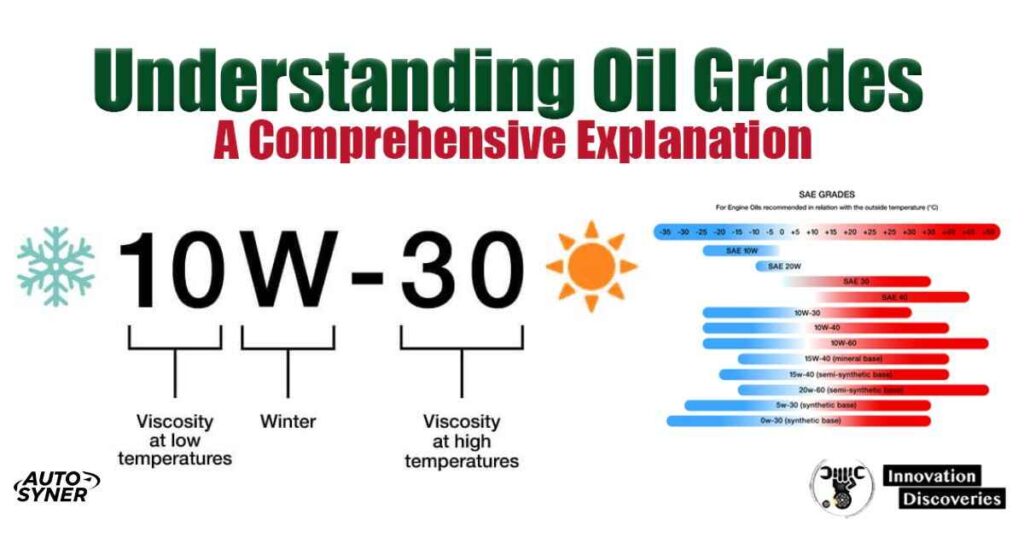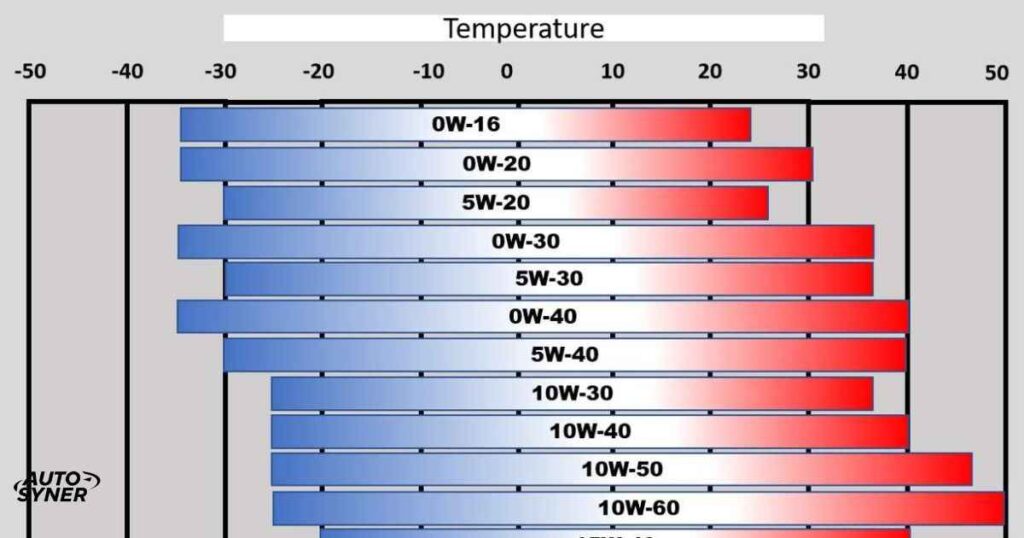Your vehicle’s engine needs the right type of oil for optimal performance and longevity. The choice between diesel oil and motor oil, particularly understanding the differences 5W-30 vs 5W-40 grades, directly impacts engine health and efficiency.
Using incorrect oil can lead to increased wear, reduced fuel economy, and potential engine damage. Many vehicle owners struggle with selecting the appropriate oil grade, especially when faced with terms like viscosity ratings and operating temperatures. The consequences of making the wrong choice can be costly.
This guide breaks down the essential differences between diesel oil and motor oil, specifically focusing on 5W-30 and 5W-40 grades. You’ll learn exactly which oil suits your engine’s needs and operating conditions.
Understanding Engine Oil Basics
Engine oil codes might seem complex, but they follow a simple system designed in 2024 by the Society of Automotive Engineers (SAE). These codes tell us exactly how the oil performs in different conditions. Modern engines need specific oil grades to function properly and maintain long-term reliability.
Decoding Oil Grade Numbers and Letters

The numbers and letters in engine oil grades (like 5W-30) have specific meanings. The number before the ‘W’ indicates how well the oil flows in cold weather. ‘W’ stands for Winter, not weight as commonly misunderstood.
The number after the ‘W’ shows the oil’s thickness at normal engine operating temperature (212°F/100°C). For example, in 5W-30, ‘5’ represents cold performance, while ’30’ indicates behavior at high temperatures. Lower numbers mean thinner oil, which flows better in cold conditions.
The Science Behind Oil Viscosity
Viscosity measures how easily oil flows at different temperatures. Think of it as the oil’s resistance to flow. At cold temperatures, engine oil needs to be thin enough to reach all engine parts quickly during startup. As the engine heats up, the oil must maintain enough thickness to protect moving parts.
Temperature significantly affects oil thickness – cold oil becomes thicker (like honey in a refrigerator), while hot oil becomes thinner (like water). Modern oils use special additives to maintain consistent performance across temperature ranges.
Table: Oil Viscosity Comparison
| Temperature | 5W-30 | 5W-40 |
| Cold (-30°C) | Thin | Thin |
| Normal (40°C) | Medium | Medium |
| Hot (100°C) | Medium-Thick | Thick |
Deep Dive: Diesel Oil vs Motor Oil
The fundamental distinction between diesel and motor oil lies in their base formulations and additive packages. Each type is specifically engineered for its respective engine design and operating conditions.
Fundamental Differences
Diesel oil and motor oil have distinct chemical compositions. Diesel engines operate at higher compression ratios and produce more soot, requiring oils with stronger detergent additives. Diesel oils contain more zinc and phosphorus compounds (ZDDP) for improved wear protection.
Motor oils focus on maintaining cleanliness and protecting against heat in gasoline engines. The base oil quality also differs, with diesel oils typically using more robust base stocks to handle higher operating temperatures and pressures.
Performance Characteristics
The performance demands for diesel and motor oils differ significantly due to the unique requirements of each engine type. Diesel engines operate under much higher compression ratios, typically ranging from 15:1 to 25:1, compared to the 8:1 to 12:1 seen in gasoline engines. As a result, diesel oils are designed to offer superior load-bearing capabilities and better resistance to oxidation, particularly at elevated operating temperatures.
When comparing 5W-30 vs. 5W-40 oils in the context of diesel engines, the difference lies primarily in their viscosity levels at higher temperatures. While both provide the same cold-temperature performance, with a rating down to -25°C, 5W-40 oil maintains better stability and protection in high-heat conditions. This makes it a preferred choice for diesel engines that endure heavy loads and operate at higher temperatures.
Additionally, modern diesel oils, including both 5W-30 and 5W-40 grades, are formulated with specialized additives to combat increased soot production. These additives help maintain engine cleanliness and ensure reliable performance, even under demanding conditions. Choosing between the two often depends on the specific operating environment and manufacturer recommendations, with 5W-40 being ideal for higher temperature and heavy-duty applications.
5W-30 Oil Analysis

Modern engines in 2024 increasingly favor 5W-30 oil for its balanced performance characteristics. This versatile oil grade offers an optimal combination of cold-start protection and operating temperature stability.
Key Features and Benefits
5W-30 oil maintains excellent flow properties at cold temperatures down to -25°C. The low winter viscosity rating of 5 ensures quick engine startup protection, reducing wear during critical cold starts. At normal operating temperatures, the 30-weight viscosity provides reliable engine protection while promoting fuel efficiency.
Studies show that vehicles using 5W-30 oil can achieve up to 2.7% better fuel economy compared to heavier grades. This oil grade has strong film strength and maintains stability under normal driving conditions.
Best Applications
5W-30 oil is ideal for modern passenger cars, light trucks, and SUVs operating in moderate climates. It performs exceptionally well in regions with cold winters and mild summers. Most Japanese and American manufacturers specifically recommend 5W-30 for their vehicles manufactured after 2010.
This grade suits daily commuting and highway driving patterns. Urban drivers benefit from its quick cold-start protection during frequent short trips.
Table: 5W-30 Temperature Performance
| Condition | Temperature Range | Performance |
| Cold Start | -30°C to 0°C | Excellent |
| Normal Operation | 0°C to 35°C | Very Good |
| High Heat | 35°C+ | Good |
|5W-40 Oil Analysis
5W-40 oil provides enhanced protection for high-performance and heavily loaded engines. This grade offers additional stability under extreme conditions while maintaining cold-start capabilities.
Distinctive Characteristics
5W-40 oil shares the same cold-flow properties as 5W-30 but provides thicker protection at high temperatures. The increased high-temperature viscosity offers better protection for engines operating under heavy loads or high temperatures.
Tests conducted in 2023 showed that 5W-40 maintains up to 15% better film strength at high temperatures compared to 5W-30. This grade excels in maintaining oil pressure under stress and provides superior protection against metal-to-metal contact.
Optimal Usage Scenarios
5W-40 oil is particularly suited for high-performance vehicles, turbocharged engines, and heavy-duty applications. European manufacturers often specify this grade for their performance models.
It performs exceptionally well in hot climates and during demanding driving conditions like towing or mountain driving. The higher viscosity at operating temperature provides extra protection for engines regularly pushed to their limits.
Synthetic vs Conventional Formulations
The development of synthetic oils since their introduction in 1972 has revolutionized engine protection and performance capabilities.
Fully Synthetic Oil Benefits
Synthetic oils outperform conventional oils in all key metrics. They maintain viscosity better across temperature extremes and resist breakdown up to 47% longer than conventional oils. Modern synthetic formulations use advanced molecular engineering to provide consistent protection.
Independent tests in 2024 show synthetic oils reduce engine wear by up to 40% compared to conventional oils. They also maintain cleaner engines by preventing deposit formation more effectively.
Cost-Benefit Analysis
While synthetic oils cost 2-4 times more than conventional oils, they offer significant long-term savings. The extended drain intervals (typically 7,500-10,000 miles vs 3,000-5,000 for conventional oils) reduce annual oil change frequency.
Improved engine protection leads to reduced wear and longer engine life. Studies indicate engines using synthetic oil can last 20% longer and maintain better fuel efficiency throughout their lifetime. The initial cost difference is offset by reduced maintenance needs and better engine longevity.
Table: Synthetic vs Conventional Oil Comparison
| Factor | Synthetic | Conventional |
| Change Interval | 7,500-10,000 miles | 3,000-5,000 miles |
| Cold Flow | Superior | Good |
| Heat Stability | Excellent | Fair |
| Cost per Change | Higher | Lower |
| Engine Protection | Superior | Good |
Environmental Considerations
Modern engine oils play a crucial role in environmental protection through improved efficiency and reduced waste. Recent advancements focus on creating more sustainable lubrication solutions.
Ecological Impact
Environmental studies in 2024 reveal synthetic oils significantly reduce carbon emissions through better engine efficiency. They require fewer oil changes, resulting in 50% less waste oil production annually.
Synthetic oils enable engines to run more efficiently, reducing fuel consumption by up to 2% compared to conventional oils. Advanced formulations also contain fewer harmful compounds and produce less toxic emissions. The longer service life of synthetic oils means fewer plastic containers and reduced transportation-related emissions.
Read This Blog: How to Clean Oil Off Engine: The Complete Guide to Engine Degreasing and Maintenance
Disposal and Recycling
Proper handling of used oil is crucial to protect the environment, as one gallon of improperly disposed oil can contaminate one million gallons of drinking water. Recycling facilities can re-refine used oil, including 5W-30 vs 5W-40, into new lubricants.
In 2024, the recycling process recovers 85% of used oil, which can be reprocessed indefinitely. Advanced recycling methods effectively remove contaminants while preserving the oil’s base properties. Whether it’s 5W-30 vs 5W-40, both can undergo this process to be reused sustainably. Many auto parts stores and service centers provide free oil recycling services, ensuring responsible disposal.
Table: Environmental Impact Comparison
| Factor | Synthetic Oil | Conventional Oil |
| Annual Waste | 2-3 gallons | 4-5 gallons |
| Recyclability | Excellent | Good |
| Carbon Footprint | Lower | Higher |
Making the Right Choice
Selecting the appropriate engine oil involves considering multiple factors to ensure optimal engine protection and performance.
Vehicle-Specific Considerations
Engine design and manufacturer specifications determine the best oil choice. Modern vehicles (2020 onwards) often require specific oil grades to maintain warranty coverage. High-mileage vehicles (over 75,000 miles) benefit from specialized formulations containing seal conditioners and additional anti-wear additives.
The engine’s design tolerance, compression ratio, and operating conditions influence oil selection. Always consult your vehicle’s manual for the recommended oil grade and specification.
Also Read This Blog: Everything You Need to Know About the Regen Light on Your Diesel Vehicle
Climate and Usage Patterns
Local weather conditions significantly impact oil performance requirements. Cold regions (below 0°F/-18°C) need oils with better cold-flow properties, while hot climates (above 90°F/32°C) require superior high-temperature stability.
Short trips and stop-start driving create more stress on oil than highway cruising. Extreme conditions like towing, mountain driving, or track use demand oils with higher temperature stability.
Table: Climate-Based Oil Selection Guide
| Climate Type | Recommended Grade | Special Considerations |
| Cold Winter | 5W-30 | Better cold flow |
| Hot Summer | 5W-40 | Higher heat stability |
| Moderate | Either | Based on manufacturer |
| Extreme Use | 5W-40 | Enhanced protection |
Frequently Asked Question
What’s the main difference between 5W-30 vs 5W-40?
The main difference lies in their high-temperature thickness. Both oils flow similarly in cold weather (5W), but 5W-40 becomes thicker than 5W-30 at operating temperature. 5W-30 offers better fuel economy, while 5W-40 provides enhanced protection under high heat and heavy loads.
Can I use motor oil in a diesel engine?
No, diesel engines require specific diesel-rated oils. Diesel oils contain special additives to handle higher compression ratios, soot formation, and increased operating temperatures. Using regular motor oil in a diesel engine can cause premature wear and potential engine damage.
How often should I change synthetic vs conventional oil?
Synthetic oil typically needs changing every 7,500-10,000 miles, while conventional oil requires changes every 3,000-5,000 miles. However, follow your vehicle manufacturer’s recommended intervals. Severe driving conditions may require more frequent changes.
What happens if I use the wrong oil grade?
Using the wrong oil grade can lead to reduced engine protection, decreased fuel efficiency, and potential engine damage. Too thick oil causes excess friction and poor flow in cold weather. Too thin oil may not provide adequate protection at operating temperatures.
Is synthetic oil worth the extra cost?
Yes, synthetic oil offers superior protection, longer service intervals, better engine cleanliness, and improved fuel efficiency. While initially more expensive, the extended change intervals and enhanced engine protection make it cost-effective in the long run.
How does climate affect oil choice?
Climate significantly influences oil selection. Cold climates require oils with good low-temperature flow properties (lower W numbers). Hot climates need oils that maintain thickness at high temperatures (higher second number). Consider seasonal changes when selecting engine oil.
Conclusion
Choosing the right engine oil is crucial for optimal engine performance and longevity. Whether opting for 5W-30 vs 5W-40, synthetic or conventional, consider your vehicle’s specifications, driving conditions, and climate. Regular oil changes with the correct grade protect your engine and maintain efficiency.
Modern synthetic oils offer superior protection and environmental benefits, making them a worthwhile investment despite higher initial costs. Remember to always follow manufacturer recommendations and properly dispose of used oil.







